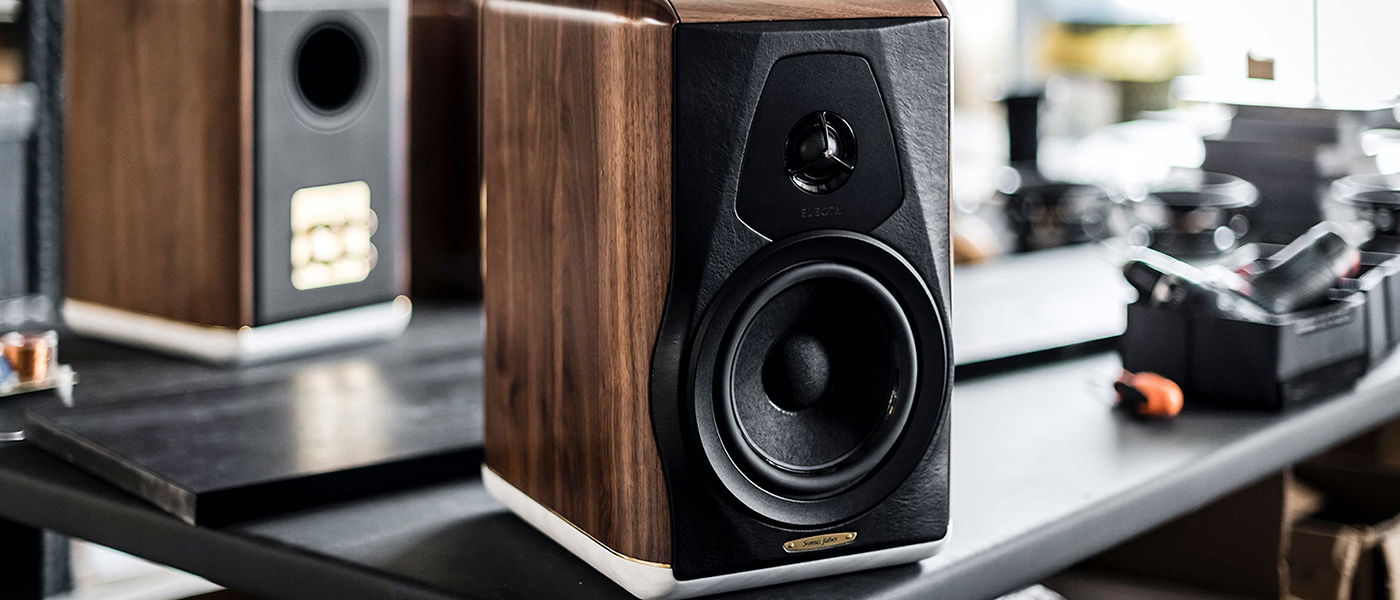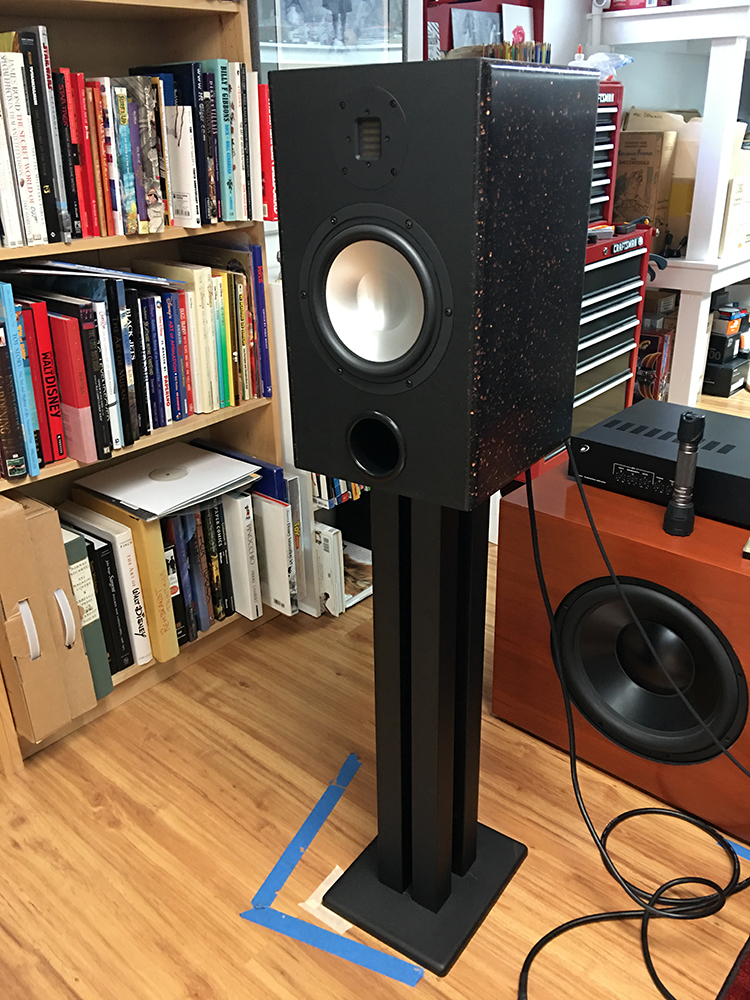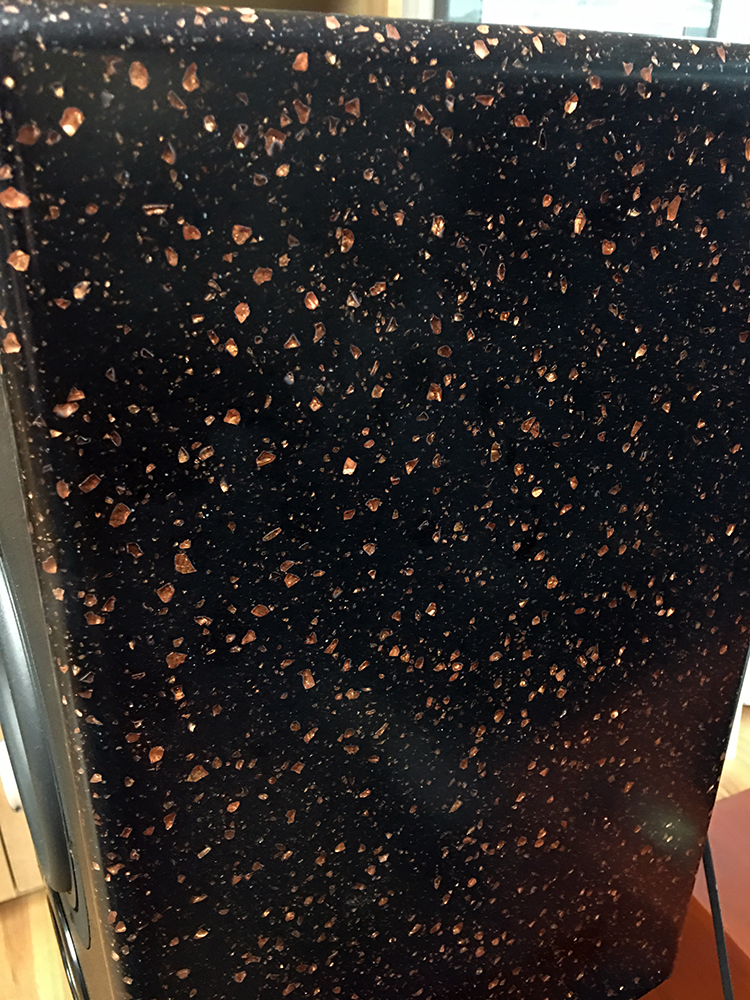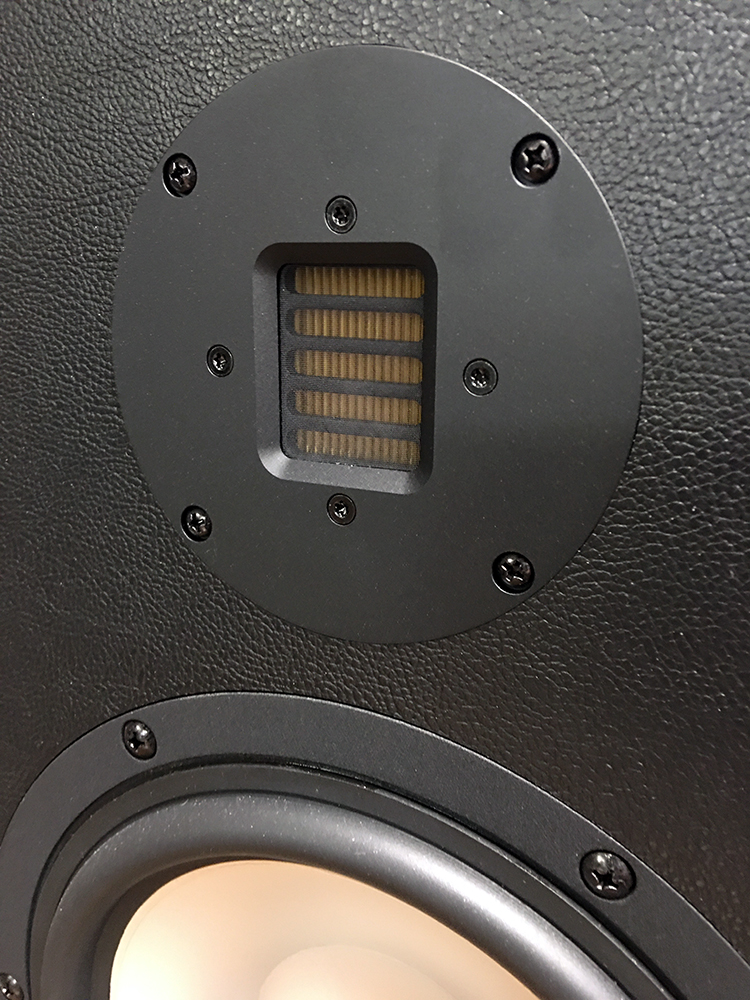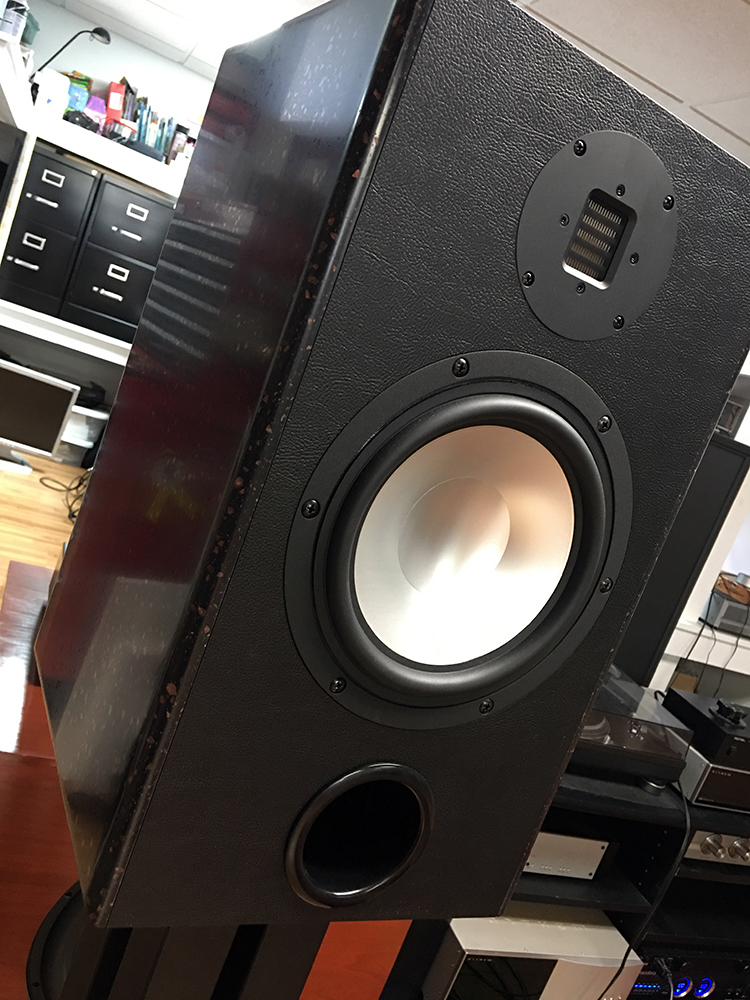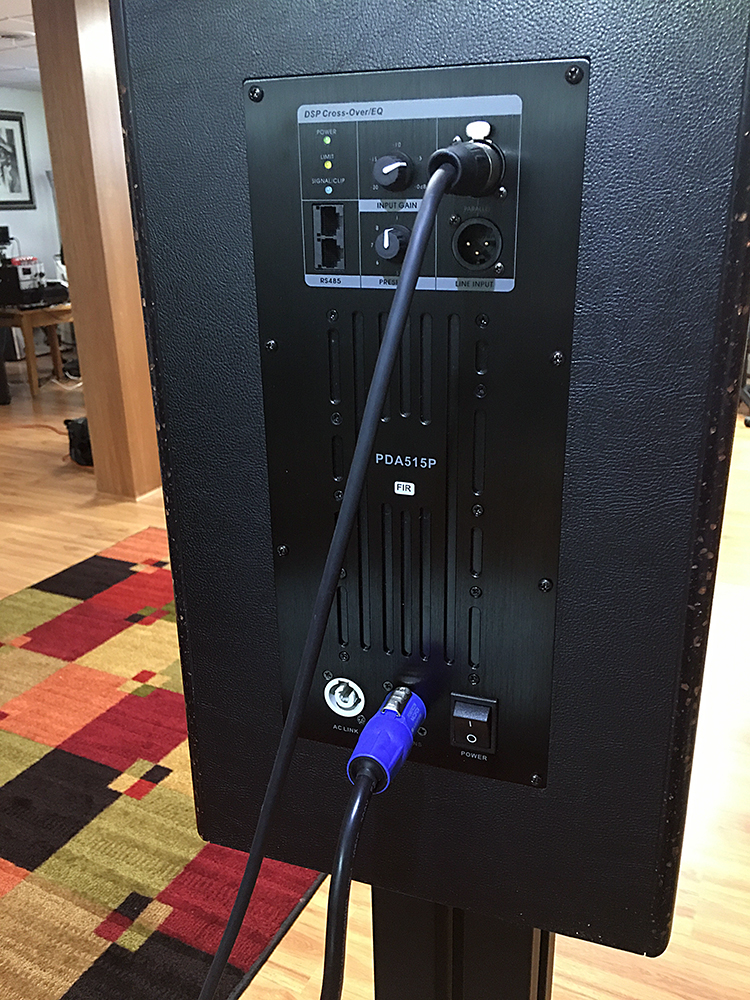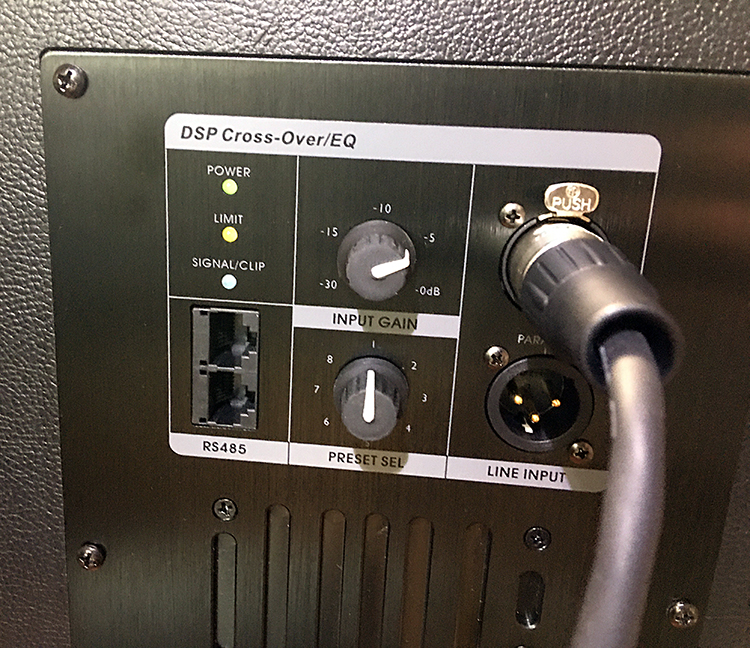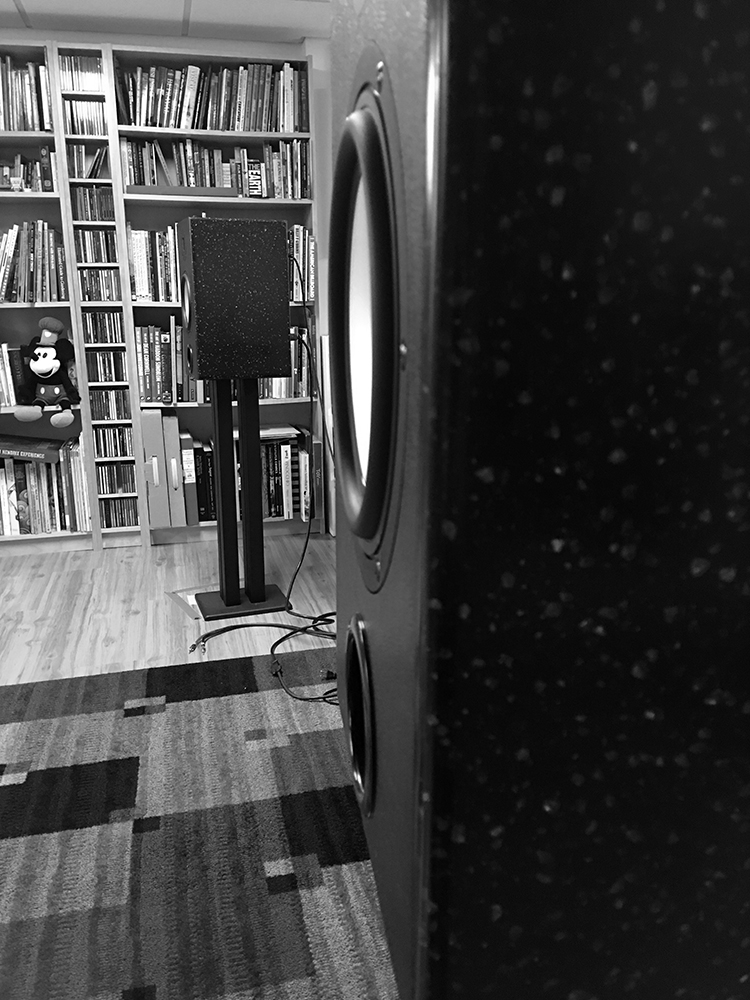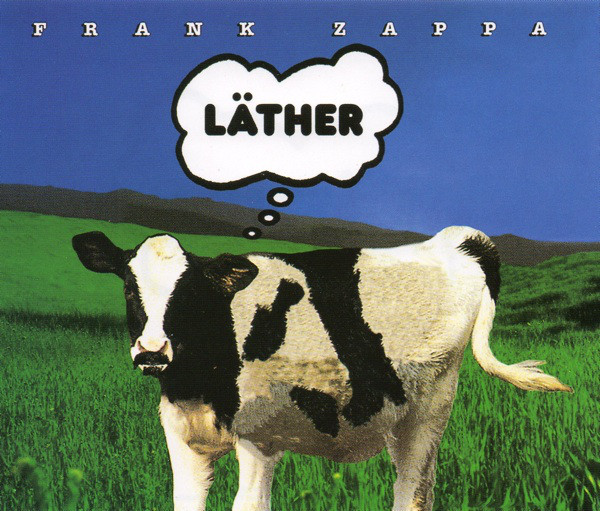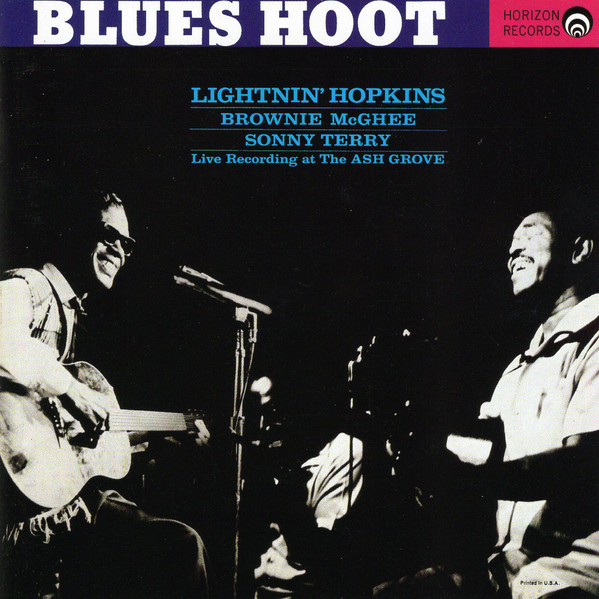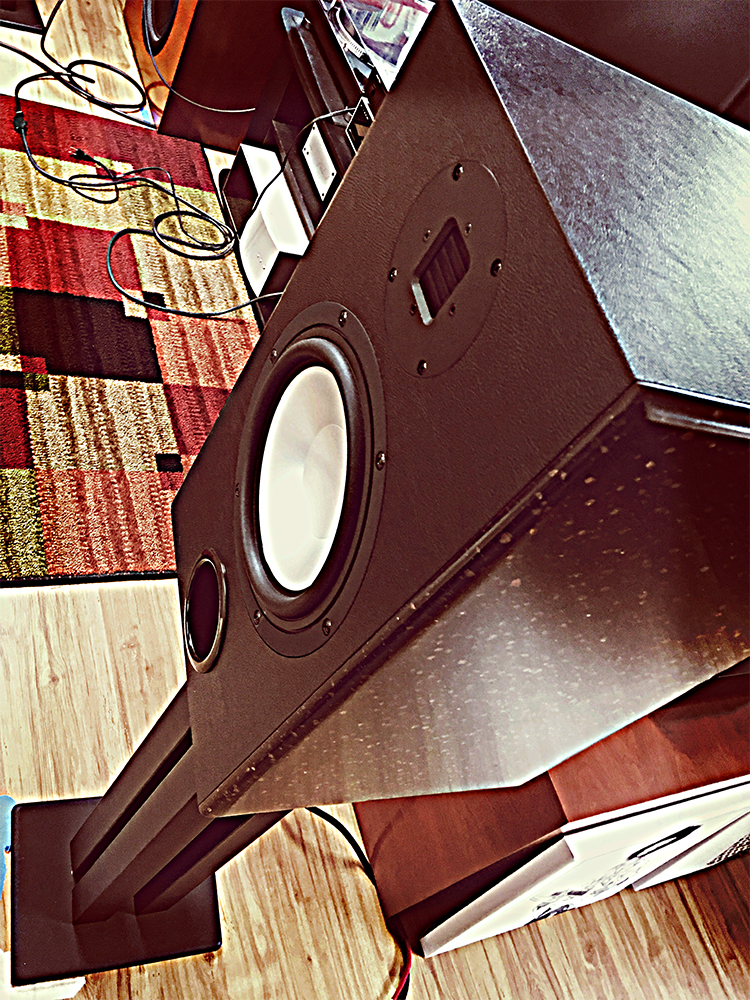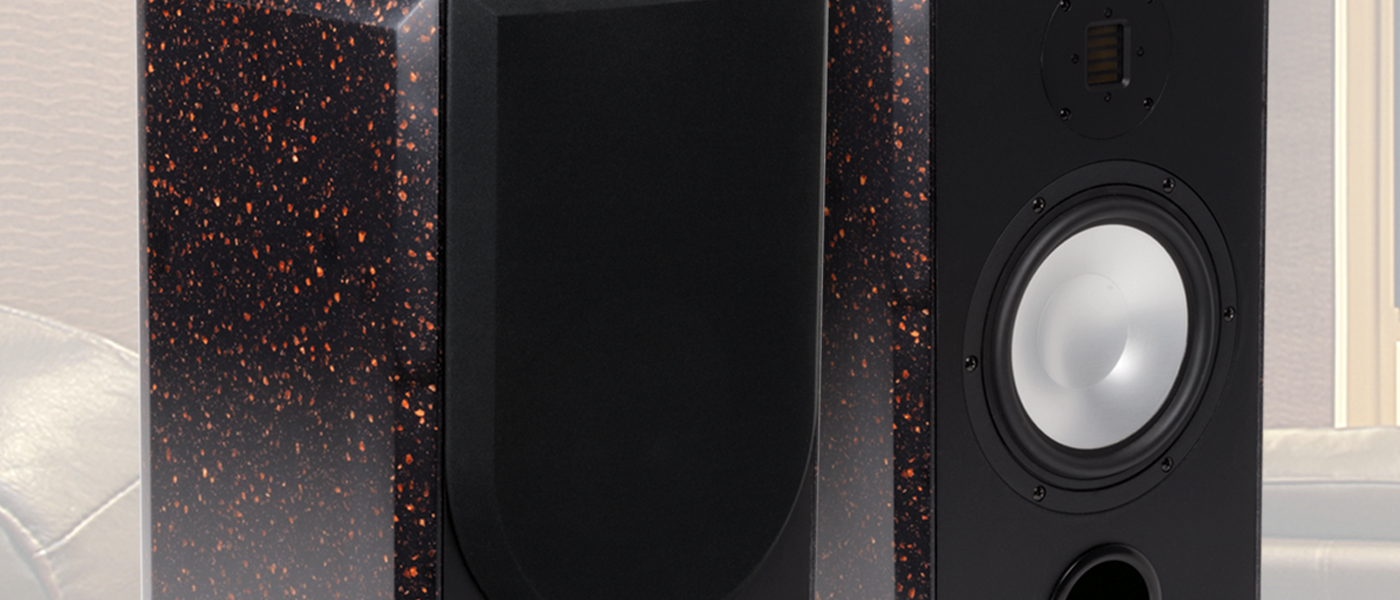
The active speakers just keep on coming it seems! RBH Sound introduced the PM-8 Active Studio monitor back at CEDIA 2019. Originally intended for the pro studio market it should be equally adept in a home hi-fi or home theater application if you don’t mind the slightly more industrial looks.
RBH Sound PM-8 Active Studio Monitor
- The PM-8 uses drivers from RBH’s Signature Series Line.
- 8 onboard DSP presets allow flexibility for near or far-field use.
- Sound is incredibly revealing (bordering on ruthless).
- Excellent bass response in my room (down to 28 Hz for a stand-mount!).
- Heavy and solidly built.
- Industrial looks. Optional side panels.
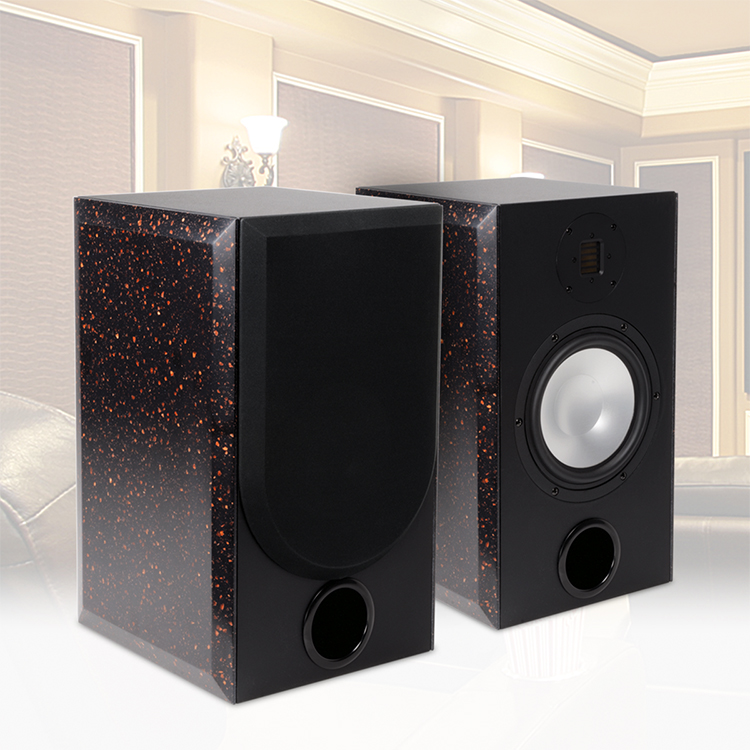
I have had the opportunity to be around (and subsequently listen to) a number of studio monitors when I used to work in the entertainment industry. Back in my Disney days, our design group would interface with the Feature Animation team on various projects. I would find myself spending a good deal of time in recording rooms and production offices there that were all outfitted with various forms of active studio speakers for recording and monitoring. At the time (just over 20 years ago now) the brand of choice at the “Mouse House” seemed to be Tannoy monitors. I encountered them in several different sizes and all with the concentric drivers (I believe they were called the “Tulip” variety) but they were all active and, in those environments, were unlike anything I had ever heard. I had never heard speakers that clear and revealing before, especially in the acoustically tuned environments that most of them were in. It was obvious that these types of speakers were designed for a specialized purpose and that they seemed to perform especially well. And this was before the advent of onboard DSP in these sorts of speakers.
Secrets Sponsor
RBH Sound out of Layton Utah, has been around for over 45 years now and while maybe not instantly on the tip of everyone’s tongue, we’ve all heard of them and we all agree that they know their stuff. Traditionally a manufacturer of passive speakers, RBH has entered the realm of pro audio with the introduction of the PM-8 Active Studio Monitors. The company claims that it has been approached numerous times over the years by customers familiar with the quality of their home products to come up with something of commensurate quality for the studio world. And come up with something they did! So why am I reviewing a pair of professional monitors? It’s not like I own a music studio or anything. Well, I heard the PM-8 prototypes at a CEDIA demo last year and I thought they had some serious potential. The AMT tweeter and the beefy 8-inch driver from their Signature Series of speakers look like an unusual and intriguing driver combination. And RBH offers decorative composite side panels for the PM-8’s to both help in reducing cabinet vibrations and to make them a little more visually appealing for home use. The PM-8’s also have 8 DSP presets for various placement and listening configurations that make them a bit more flexible than your run-of-the-mill home speaker. So come along with me as we examine another new wrinkle in the active loudspeaker landscape.
Speakers:
Description:
Active Two-Way Monitor Speaker with front-firing port
High-Frequency Driver:
Single 1.38″ x 1″ (35mm x 25mm) AMT (Air Motion Transformer)
Mid/Low-Frequency Driver:
Single 8″ (203mm) Reference Aluminum Cone Driver
On-Board Amplifier Type:
150-Watt Class-D for Tweeter, 250-Watt Class-D for Woofer
Frequency Response:
32 Hz – 20 kHz (±3dB) (Manufacturer)
Crossover:
2,500 Hz @ 48 dB/Octave
Operating Voltage:
110V – 240V Auto Adjusting
Input:
Line Level XLR
Cabinet finishes:
Black Textured wrap over HDF. Custom Composite Side Panels available at extra cost.
Driver finishes:
Silver or black for the mid/woofer
Dimensions (H x W x D):
19-1/4″ x 11-3/8″ x 13-5/16″
Net weight:
43.35 lbs. (19.7 kg) (each)
Warranty:
5 years (Cabinets and Drivers), 3 years (Amplifiers)
Accessories:
Black Fabric Grilles, AC Power Cord, RCA to XLR Input Adapter
MSRP:
$1,595.95/EACH (w/o side panels) $1,995.95/EACH (with side panels)
Website:
Company Directory:
SECRETS Tags:
rbh, active, dsp, studio, monitor, active-speaker, speaker review, review 2020, bookshelf speaker
Most RBH loudspeakers that I have been familiar with in the past have had curved cabinets and either a wood grain or piano black finish to them. The PM-8’s are rather more utilitarian looking, befitting the more working musician/pro audio application this model is geared towards. Its standard finish is a textured black vinyl wrap over a well-braced, ¾-inch HDF structure. The available optional side panels come in a variety of color choices and appear, to my eye, to be similar in feel and density to solid surface kitchen-countertop material. The panels, beyond being decorative, are heavy and rigid, the additional extra density is good for damping any unwanted vibrations from the sides of the speakers. And these speakers are exceedingly well braced and rigid! Rapping my knuckles on any side of the PM-8 feels akin to knocking on a concrete block. The panels on my review pair had copper-colored speckles set in a black base, simulating an almost granite appearance.
Under the magnetically attached black fabric grille, the business end of the PM-8’s sports a single 1.38-inch x 1-inch AMT tweeter and an 8-inch aluminum cone woofer from RBH’s Signature speaker line. The woofer is available in either a black or silver finish as in my review samples. A 3-inch port takes up residence just below the woofer. At first look, I was wondering how the engineers at RBH could possibly get a smooth transition between only two drivers of very disparate type and size without a third mid-range driver between the two? Shane Rich, Technical Director at RBH, explained their reasoning to me.
“Up until relatively recently in my time designing speakers, I have found it quite difficult to get ideal integration between our 8-inch drivers and a tweeter in two-way designs. A 3-way design using a small midrange driver might make more sense. That mindset changed when I experimented with the air motion transformer (the same AMT tweeter we are using in the SV/SI 831 & SVTR/S system). That particular AMT tweeter, because of its larger diaphragm, can easily cross over low enough in frequency to make an 8-inch two-way system viable, allowing for proper integration between the woofer and tweeter (good horizontal off-axis/power response). With the PM-8, we were able to maintain ideal integration between the 8-inch mid-woofer and a smaller AMT tweeter, given the speaker is being powered actively with the integrated amplifier where the active crossover is very high order (steep-slope) with 48dB/octave linear phase filters”.
The back, or “party side” of the PM-8 sports a substantial plate amplifier with built-in DSP resources sourced from Marani Pro-Audio. There are a pair of Class-D amplifiers on-board each speaker. One provides 150-watts to the tweeter while the other sends 250-watts to the mid-woofer. Each speaker accepts an analog line-level input from a preamplifier (via XLR jack) which is then converted to a 24-bit/96 kHz digital signal for filtering and processing before being amplified and sent to the drivers. The DSP section of the plate amp uses FIR (Finite Impulse Response) filters and the aforementioned steep crossover slopes to keep everything behaving properly and to provide some options. An 8-position rotary dial located next to the level control allows access to 8 preset speaker conditions that are programmed at the factory. They are:
- Far-Field Full Range: Provides full-range frequency response including active EQ for maximum bass extension.
- Far-Field Flat: Removes active EQ at bass frequencies.
- Far-Field 80Hz High-Pass filter: Engages 80Hz 12dB/octave high pass filter for integrating speaker with subwoofer
- Far-Field Full Range + Clip Limiter: Frequency response of setting 1 with the addition of a clipping limiter engaged on the amplifier to reduce distortion at high SPL’s.
- Far-Field -T: Frequency response of setting 1 with reduced tweeter output (-3dB).
- Near-Field Flat: Response of speaker tailored for near-field response target curve for listening at less than 1.5m distance.
- Near-Field 80Hz High-Pass filter: Engages 80Hz 12dB/octave high pass filter for integrating speaker with subwoofer.
- Near-Field Full Range: Provides active EQ for maximum bass extension.
So, as you can see, the PM-8’s offers a great deal of usage flexibility with these preprogrammed settings. Sounds good, yes? But now I am going to let you in on a little inside baseball. Those settings are just the tip of the iceberg. During the review, RBH gave me a sneak peek at the programming software that they use to set up and program each speaker for their clients. The DSP resources on the PM-8’s are capable of a lot more than what I’ve outlined so far. RBH is currently working on a more user-friendly and safe way to allow owners to take advantage of some of the digital horsepower that lurks under the PM-8’s hood. Let’s just say that it wouldn’t be beyond this speaker’s capability to measure the room that it is placed in and have it generate correction filters for itself to compensate for the largest room issues. Something to look forward to in a future update hopefully!
Rounding out the connections on the back of the RBH PM-8’s are a pair of RS-485 ports used for programming at the factory and conceivably hooking up to some sort of network situation in a recording studio. There is also a single balanced XLR output on the back of each speaker most likely to daisy-chain multiple speakers or pass the input signal to a powered subwoofer. A 6-foot long power cord connects to the plate amplifier on the PM-8’s via a professional style Speakon connector. It’s worth mentioning that, for home use at least, a longer power cord for each speaker might be appreciated.

Once unboxed the RBH PM-8 speakers were placed on 28-inch tall Monoprice Monolith speaker stands, filled with cat litter to deaden any resonances. The speakers were spaced approximately 9-feet apart with my seating position located 10-feet away from the center point between the speakers. Normally I tend to toe in speakers that are here for review, at least a little bit, to obtain the best imaging. The PM-8’s however required almost no toe-in to get them sounding focused and pleasant to my ears. Any more than just the slightest adjustment towards the listening position resulted in a sound that was too bright for my liking. An OPPO BDP-105D Universal Player served as a main audio source along with an ELAC Discovery Music server (sending its SPDIF output to a Benchmark Media DAC 3B) using ROON to manage my music files. For a vinyl source, I used my Technics SL1200 Mk 6 modified by KAB Electroacoustic, along with an Audio Technica OC9ML/II Moving Coil phono cartridge. This was hooked up to the Pass Labs XP-25 Phono preamp. Both the Benchmark Media HPA4 and Anthem STR preamplifiers were used to manage the inputs to the speakers at various points. The XLR interconnects used were from Blue Jeans Cables.
There’s no getting around the fact that the RBH PM-8’s look like large, mostly black boxes on stands. The decorative side panels visually jazz up that impression some but, their professional studio roots are quite obvious. I can assure you however that there is nothing “boxy” about the way these speakers sound. They are very much refined and surgically precise instruments.
My experience with AMT tweeters is predominantly from listening to GoldenEar speakers which use a similar type of driver. However, the best results I’ve gotten with any of those speakers have been achieved using significant toe-in, to the point where the tweeter’s line-of-sight converges directly at my sitting position. Not so with these RBH monitors.
Even with the typical 7 to 10 degrees of toe-in that I usually end up using with most speakers, the top end response of the PM-8 was noticeably too bright for me. Using the -3 dB tweeter setting (number 5 on the EQ preset dial) subjectively took down a bit of the sparkle and sheen, but some of the brightness was still there. So instead I worked from the other end and began again with the speakers facing straight out into the room. This tonally sounded much better, but now the center imaging was a bit too diffuse. I then slowly began to turn each speaker in by the smallest of amounts until the center image was just locked into place. In the end, I had barely 3 to 4 degrees of toe-in, but this (in my room) is where the PM-8’s sounded their best. And their best was quite remarkable! During my listening sessions, the RBH PM-8’s gave me some of the most detailed and dimensional vocal reproduction that I’ve come across in a good while. Singers in particular were eerily real sounding. Once dialed in, the overall soundstage was decently wide and deep which made for good off-axis casual listening, but when sitting in the money chair, that’s where I was able to specifically localize performers and sections of instruments in space with great clarity and depth. The treble extension of the PM-8’s are impressive (not simply in volume but transparency), and it helps in solidifying those fine details when reproducing stringed instruments, cymbals, and brass. Even after careful placement though, I occasionally still found the -3 dB tweeter preset handy to help tame some of the more brittle sounding Columbia or DG vinyl recordings and some early CDs I have in my collection.
Beyond the dimensionality and overall great detail to the sound, the bass extension of the RBH PM-8 was also noteworthy. As an active design, the engineers at RBH have more options to maximize the EQ of the 8-inch driver to deliver solid linear bass in-room. In my large studio space, the PM-8’s bass extension was able to reach down to 28 Hz before rolling off. This from a 2-way monitor on a stand placed well away from the front wall! On all the material I listened to, bass quality came off as tight and solid without sounding as if it were overly juiced at all. I did have some fun experimenting with the speaker’s 80 Hz high pass setting and crossing the PM-8’s over to my two 15-inch sealed subwoofers. The blend came together quite well for a quick and simple merge and I got to enjoy a little beefier bottom end that still complimented the speaker’s character. Still, for critical music listening, I doubt most people would find fault with the PM-8’s natural bass capabilities. I do legitimately marvel at how well RBH got the blend between the AMT and the mid/woofer. I was honestly expecting to hear some sort of difference in sonic character when one driver handed off to the other. And, at least by ear, I couldn’t lock in on one, anywhere. I’d wager this is another area where the active electronics and on-board DSP resources allowed for such a good result. Something that might have otherwise been more of a bear to achieve passively. I could easily see three of these speakers behind an acoustically transparent screen, anchoring a large-ish home theater very capably.
Lyn Stanley “Interludes” A.T. Music, SACD, 2015
A wonderfully recorded SACD of mostly jazz standards themed around love. Ms. Stanley’s vocals are the main draw and the PM-8’s do not fail to impress with their razor-sharp rendering of her voice, capturing every nuance and inflection and placing it perfectly in the center of her band. On “One of Those Things” the soundstage extended well outside the speakers’ boundaries, so it genuinely sounded like her band wrapped around her as they all played together.
Guitar, trombone, piano, stand-up bass all had individual solos where it was easy to identify the performer’s positioning in the mix relative to the vocalist. Superb definition and weight on the low register piano notes and the bass plucks stood out in particular. “Black Velvet” is a slow-burn of a song that starts again with that great sounding bass coming from those 8-inch aluminum drivers. This is followed by a series of crisp finger snaps that the PM-8’s perfectly render along with the resulting echo. Ms. Stanley’s deeper, more breathy vocals really have some extra depth here and the sound of the drummer’s hands slapping the drum skins comes through exceedingly well. The electric guitar on this track sounds especially good too with great tonality and ring to the notes. And speaking of guitar, the opening guitar part of “Last Tango in Paris” is just a simple-sounding rhythm, but it’s so well recorded and sounds so good through these speakers that I found myself playing that opening 20 seconds of music over and over again.
Frank Zappa “LATHER” Rykodisc, CD, 1996
Frank Zappa was undoubtedly as much a musical genius as he was an acquired taste for many people. When I say that his music is a combination of “a little bit of everything”, I mean it literally. The actual production and distribution of Lather has its own convoluted history that I won’t delve into here, but suffice it to say that its 3-discs of material are a great primer as to what Zappa and his various band incarnations were capable of musically.
The complexity of Zappa material can sometimes be a challenge for some speakers to reproduce with any sense of musical fidelity. The precision and accuracy of the RBH PM-8’s allow it to do a wonderful job in revealing all the musical layers in many of these tracks which are often interspersed with comical edits from various mobile recordings. The slow-moving grandeur of “Re-Gyptian Strut” has the PM-8’s throwing out a wide image of the performance upon which there is this precise and detailed xylophone solo, moving from left to right and back, that is mated to a thick and surprisingly deep bassline. Then keyboards, drums, horns, and various other forms of percussion all fold in at once, and the PM-8’s perfectly sorts it out and plays it all back with exacting detail and extremely good spatial positioning of the instruments. “Broken Hearts are for Assholes” and “The Legend of the Illinois Enema Bandit” are live romps combining crude humor, stories of deviant behavior, and exceptional musicianship. In the former tune, Zappa’s bizarre tenor to baritone (almost doo-wop) vocal stylings is nicely rendered by the PM-8’s with the appropriate weight and detail. The nicely distorted layered guitars sound properly gritty amid the accompanying screaming vocals of drummer Terry Bozzio. The latter track has the PM-8’s putting out an especially good live spatial representation of the stage and audience with Zappa’s guitar solo coming off as suitably creepy and disturbing, reflecting the nature of the song. Ray White’s lead vocals are reproduced exceedingly well and truly capture his extended range. Again, the bass floor just rumbles through this song and the PM-8’s let you know that it’s solidly and tunefully there.
Lightnin’ Hopkins with Sonny Terry & Brownie McGhee “Blues Hoot” Compact Classics, CD, 1995
A great sounding old live set that highlights the voices of some classic blues and folk singers. “Big Car Blues” features Lightnin’ Hopkins’ clear yet nasally voice in the left channel and just his acoustic guitar in the right. Hopkins singing quickly changes from quiet and conversational to loud and belting at the drop of a hat and the RMH PM-8’s Active Monitors easily keep up with it, maintaining detail and composure throughout the unexpected swings in volume.
His voice is imaged so well that it really seems like he is sitting on a stool off to my left, strumming guitar and singing. The guitar has a big natural-sounding hollow tone and reverberation that fills the air while not overpowering the details of the delicate fingerpicking style that Hopkins uses. “Blues for Gamblers” has Sonny Terry joining in on Harmonica, along with Brownie McGhee and Big Joe Williams on vocals and guitar. The PM-8’s renders each of these players distinctive, earthy vocals as detailed and precisely imaged as I have ever heard. The three separate guitars can all be distinctly discerned even as they all play in harmony. Sonny Terry’s harmonica is in the left channel and sounds crisp and detailed without getting unduly harsh.
Bernard Herrmann “Film Classics” DECCA/Eloquence, CD, 2010
The RBH PM-8’s can also handle large orchestral fare very well as I found myself turning up the volume on the track “Journey to the Center of the Earth” to just sub-ridiculous levels to see how the speakers would fare. They didn’t balk one bit at the added volume and the pipe organ, bass drums, and horns carried some serious weight and depth through these speakers without compressing or detracting from the finer details of the harps and assorted percussion in the music.
The AMT tweeters handled the loud crashing cymbals with aplomb, even at the silly volume I was listening to. Of course, at more down to earth levels, the whole piece sounded expansive and magnificent. The impressive dynamics continued with “The Day the Earth Stood Still”. This is very expressive, intense music, and the PM-8’s did an impressive job at playing these orchestral pieces with a serious sense of scale that fit the material. And again, the PM-8’s continued to surprise with their bass capability and quality. When it was in the music, from whatever instrument, the speakers reproduced the bass naturally and accurately. It never seemed too much or not enough.
Measurements by Carlo Lo Raso, Technical Analysis by Carlo Lo Raso and David A. Rich
Secrets Sponsor
Bench tests were performed with a Cross Spectrum Labs calibrated UMIK-1 USB microphone connected my Surface 3 PRO tablet and using Room EQ Wizard acoustic measurement software. On and off-axis measurements were taken with the mic at a distance of 1-meter from the center point between the tweeter and the mid/woofer. Unlike measurements taken outdoors or in an anechoic chamber that measure a speaker in isolation (and assess straight-line engineering), in-room measurements give a sense of how a speaker behaves in the actual environment that it’s used. Both types of measurements are valuable, I just find in-room measurements interesting as they help shed light on what I am hearing and why. That and I don’t own an anechoic chamber!
Note that all measurements were taken with the PM-8’s at their default far-field EQ setting (EQ-1 on the dial) and no other form of EQ was used unless otherwise indicated.
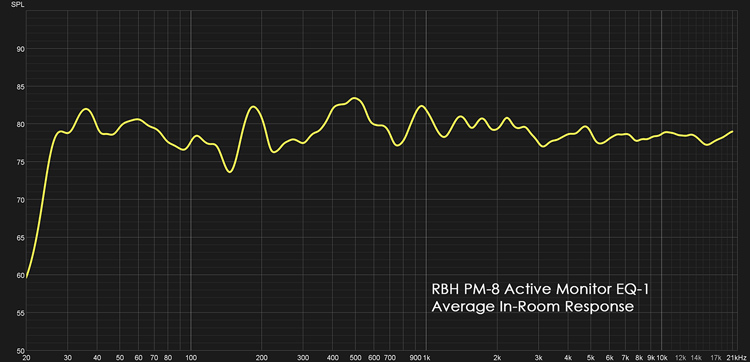
This in-room measurement is an 18-point spatial average. A 9-point measurement was made for the right speaker and then repeated for the left speaker. Averaging both speakers is an approach that others have been using and publishing. Using data from both speakers reduces the modal response of the room by averaging the differences in the response of the two speakers from room asymmetries. The technique cannot eliminate them however and, as such, the response below 300Hz remains room dominated. This measurement was done with the PM-8’s at their default far-field EQ setting (EQ-1 on the dial). The results show a fairly consistent response from 400 Hz on up, exhibiting a mild trough between 200 Hz – 400 Hz and a dip centered at about 750 Hz. The dip at 160 Hz is a floor bounce (the distance from the woofer to the floor and back to the speaker) which appears in all my speaker measurements in this room. The bounce frequency will vary depending on whether I am measuring a tower or a bookshelf speaker but it is always there and for this PM-8’s measurement it appears at 160 Hz. Bass response is solid down to about 27 Hz before rolling off. Treble response seems to be reasonably linear right up to 20 kHz. However we still see the Gundry dip around 3kHz which is a voicing charictaristic that originated in the UK. This is typically the result of the transition from a large woofer becoming directional, hence the off axis response in this average declines and so does the whole curve. A small dome tweeter without a waveguide would normally snap the off-axis response back up, and with it the listening window. The wide AMT does not have as wide an off-axis response, compared to a dome with no waveguide, as we will see in the graphs below. This prevents the snap back.
The dip appears to be a result of EQ. We see it in the on-axis response and the in-room response but it’s relatively subtle. This voicing is easy to do with active DSP. Some adjustments at the back of the speaker would be useful to change this voicing if it’s not desired.

Here is the same in-room response laid over another one taken with the – 3 dB tweeter EQ preset(EQ-5 on the dial) to illustrate the differences between the two settings
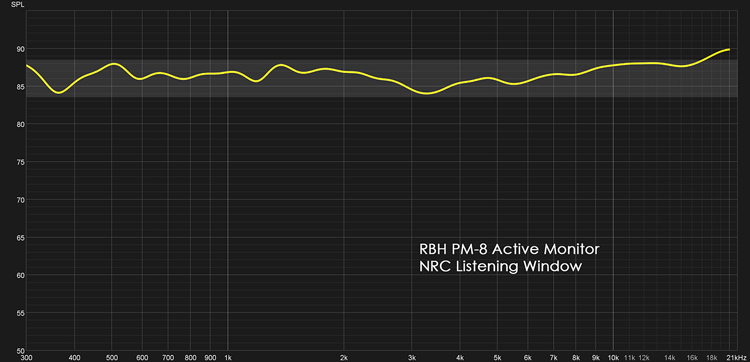
This is a plot of the NRC listening window scaled from 300 Hz on up which is averaged from the following measurements: 0-degree on-axis, +-15 vertical, +-15 horizontal, and +-30 horizontal. Here we see a nicely controlled and uniform response in the portion of the frequency range that is dominated by the speaker (response below 300 Hz tends to be dominated by the room and can vary greatly). The grey area indicates a 5-degree window and you can see that almost the entire response above 300 Hz falls within a +/- 2.5 dB range in that window. Only above 17 kHz does the response extend outside that window by an additional 2 dB. Your pet dog or bat can verify this.

Above are the horizontal radiation curves of the PM-8 Active Monitors from 0 to 30 degrees, scaled from 300 Hz on up. Looking at the angles most closely related to the direct response, we see smooth curves with no obvious resonances at the 1/6 octave smoothing used here.
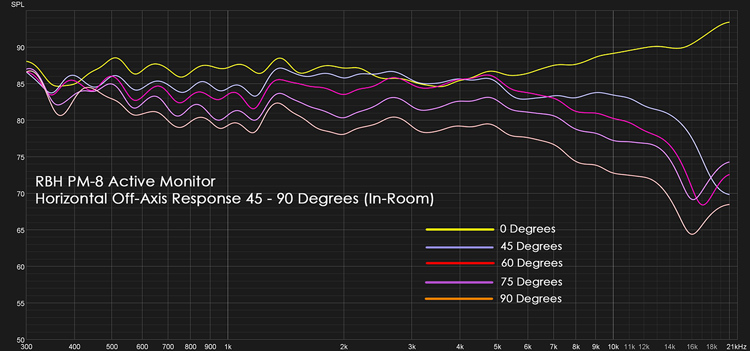
Above are the horizontal radiation curves from 45 to 90 degrees, scaled from 300 Hz on up. Again, we continue to see generally smooth response curves with no obvious resonances and the expected rate of extended off-axis decline. You can see the 2kHz – 4kHz dip disappears at 30 degrees out. Again hinting at a voicing of the speaker in the on-axis response. It does not look like RBH places any custom waveguide on the AMT but the woofer and tweeter look well matched with no snap back of the response past the crossover to the tweeter.
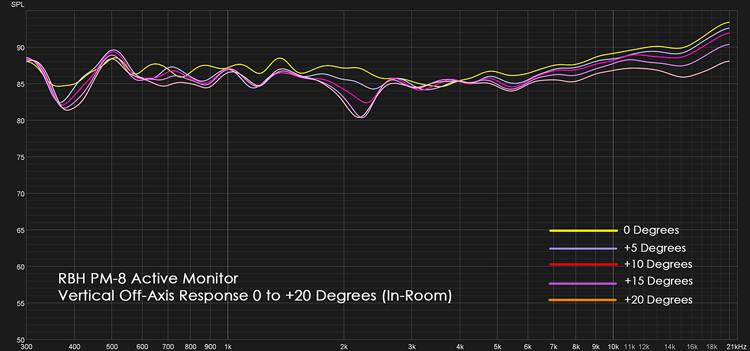
Moving to the vertical radiation pattern for positive angles, we see the plots for 0 to +20 degrees, scaled from 300 Hz on up. These show very little change outside of a 2.3 kHz dip as we move beyond 10-degrees indicating a high order crossover filter preventing the woofer and tweeter producing much interaction from the non-coincident drivers. This is the active DSP crossover in action. This sharp dip at 2.3 kHz is not to be confused with the shallow 2kHz – 4kHz dip which is in the on-axis and off-axis response, again pointing a small intentional voicing.
The AMT is very wide in the vertical direction which should result in a significant rolloff of the tweeter off-axis but it does not look so bad.
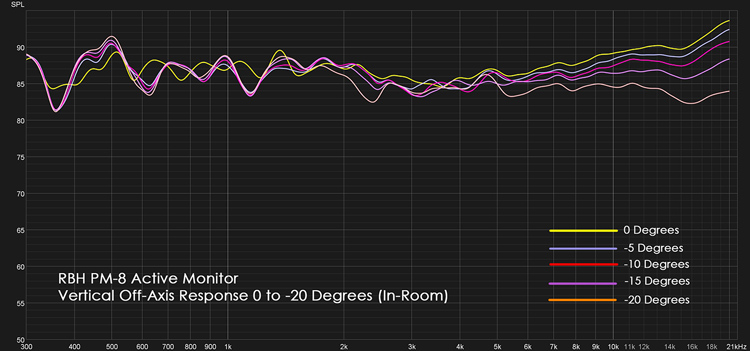
In the vertical radiation pattern for negative angles, we see the plots for 0 to -20 degrees, scaled from 300 Hz on up. Here, the crossover area between the woofer and tweeter shows little change. Going down we can see a little more AMT directionality. This loss of energy off-axis would make the speaker lack a little presence, hence the top end boost which is a common issue with AMT/ribbon designs, but the push is not large relative other speakers we have seen.

For the sake of completeness and to show what can be done with the judicious use of room correction, here is another in-room response of the PM-8 taken with the application of ARC room EQ, courtesy of the Anthem STR preamp. The correction was limited to 400 Hz and below to deal with various room issues, everything above 400 Hz is the speaker’s natural response. The grey area indicates a 5-degree window and you can see that almost the entire response falls within a +/- 2.5 dB range within that window. This was the profile I used for my subjective listening evaluations.
Overall, another well-designed speaker that is significantly enhanced by using active DSP. Relative to other active speaker designs we’ve seen, the RBH PM-8’s offers great value and features for the money. If they are able to integrate some form of user configurable on-board room correction down the road, Genelec should start to worry.
A working-class looking speaker that sounds like it’s been to finishing school!
- Surgically precise imaging and detail.
- Big soundstage with good off-axis performance.
- Deep, detailed bass response.
- Powerful onboard amplification and DSP resources.
- A version that looks like the RBH signature line, with curved cabinets and veneer.
- Allow home users access to the DSP resources to EQ the speakers for their room.
- Longer power cords for home use.
The march of the active speakers through my listening room continues! The RBH PM-8 Active Monitors are, by my account, a well-thought-out and solidly executed active design. Essentially, we have a medium-sized 2-way, ported stand-mount speaker that can seriously outperform some comparably priced passive floor-standers. It also should make some pro-audio centric brands start looking over their shoulders. The active amplification and DSP allow for some intelligent tailoring to get the two drivers to cooperate and perform with optimal results. And while their original intent may have been for professional use, they certainly can work well, with proper setup, in a home situation. They reproduce music with exceptional clarity, fidelity, and precision.
Combine that with an extended, but not overblown bass response and you have a speaker that will reproduce your source material with accuracy and completeness. As a result, some may call the RBH PM-8’s revealing while others might label them as ruthless, they do require careful placement and the various EQ presets allow for some additional flexibility to get them to sound their best in a variety of situations. It’s also clear that these speakers’ DSP resources have some untapped potential that I hope RBH capitalizes on with future updates. And while these speakers may appear as simple black boxes, they are very well made, and the decorative side panels add a unique visual touch while also strengthening the enclosure. All in all, once you realize the performance these speakers are capable of, then I’d say the RBH PM-8 Active Monitors are an absolute bargain to be had. An unconventional but recommended choice!
The author wishes to thank David A. Rich for his assistance in this review.


